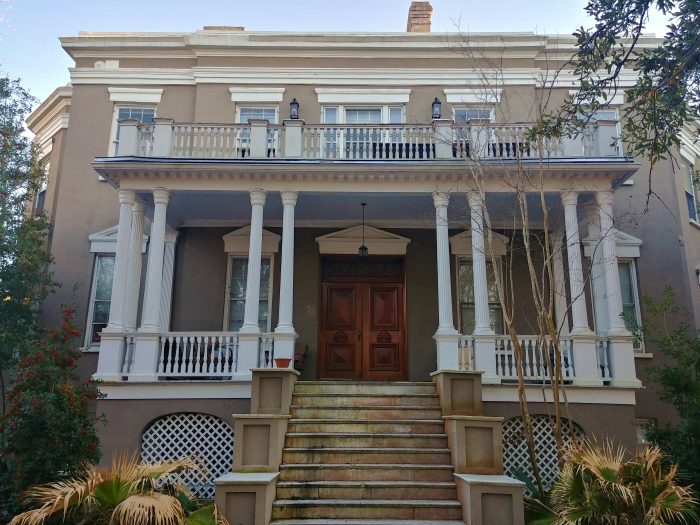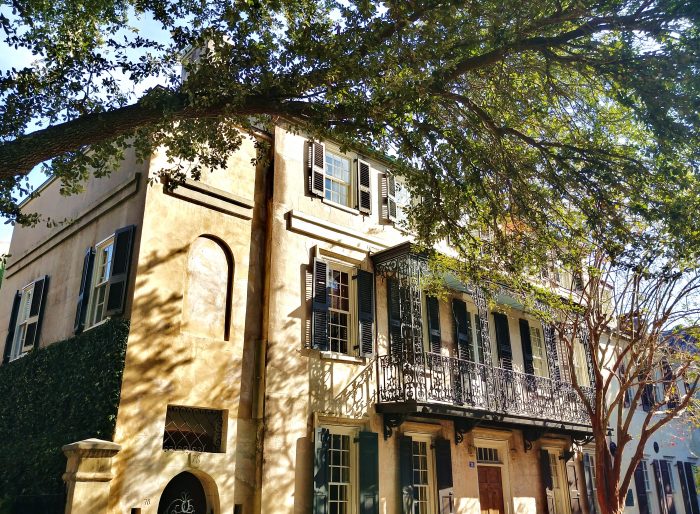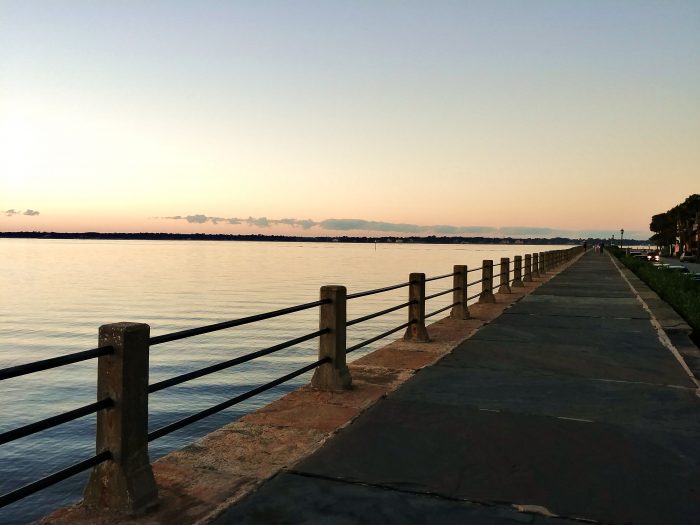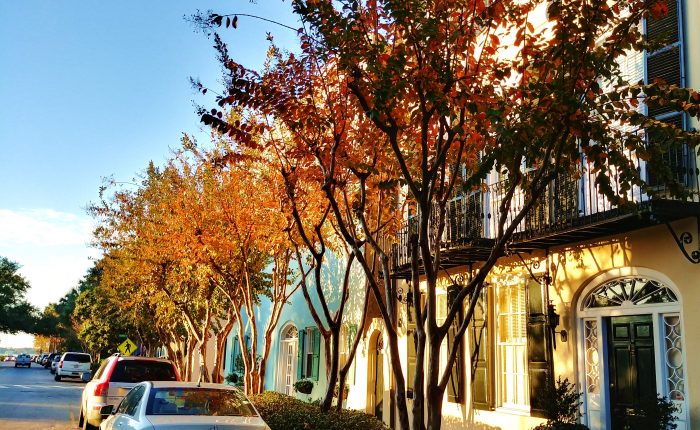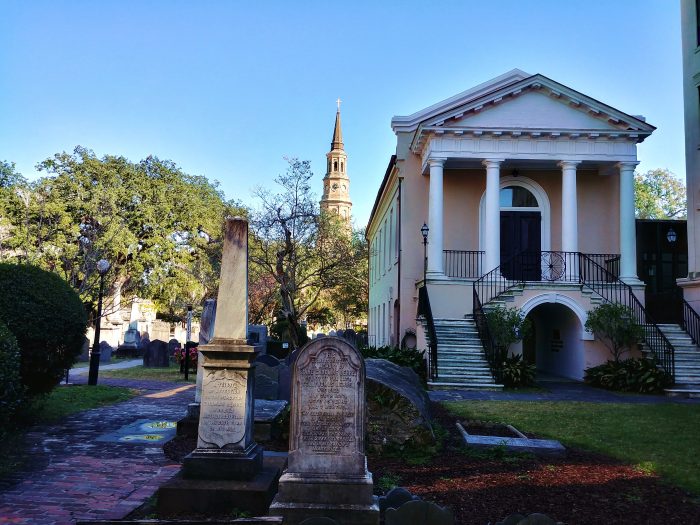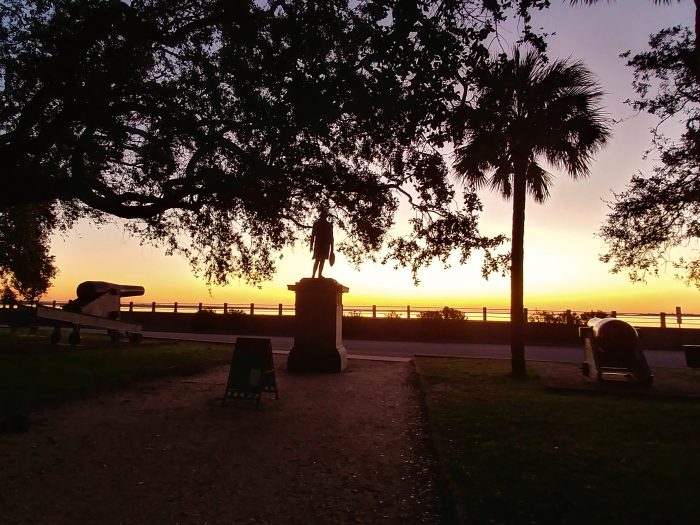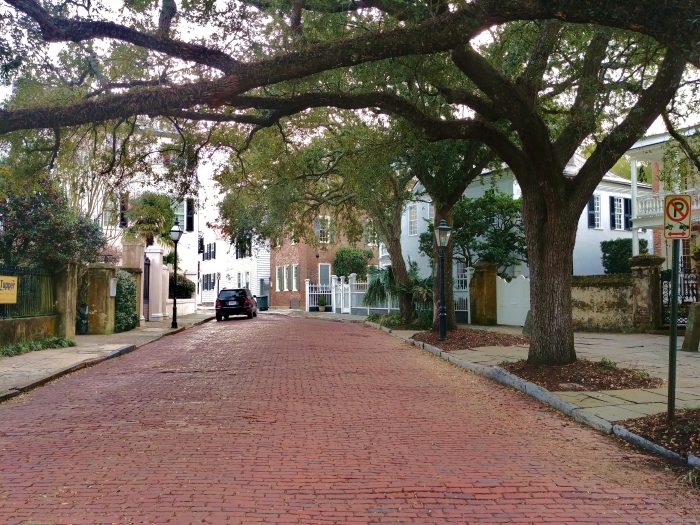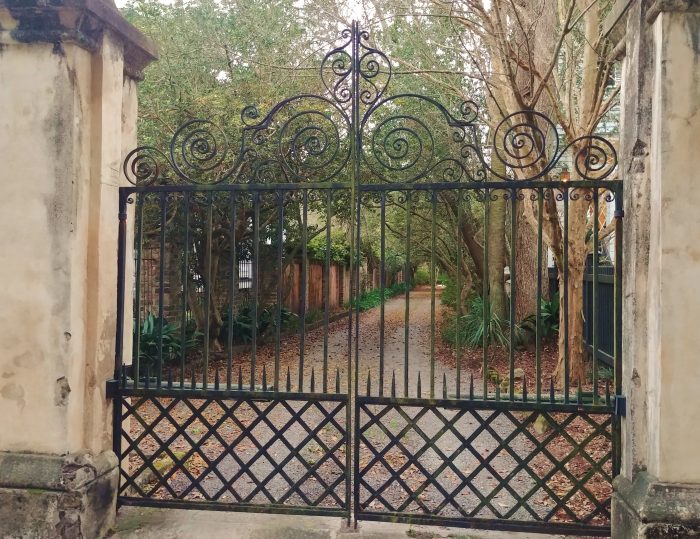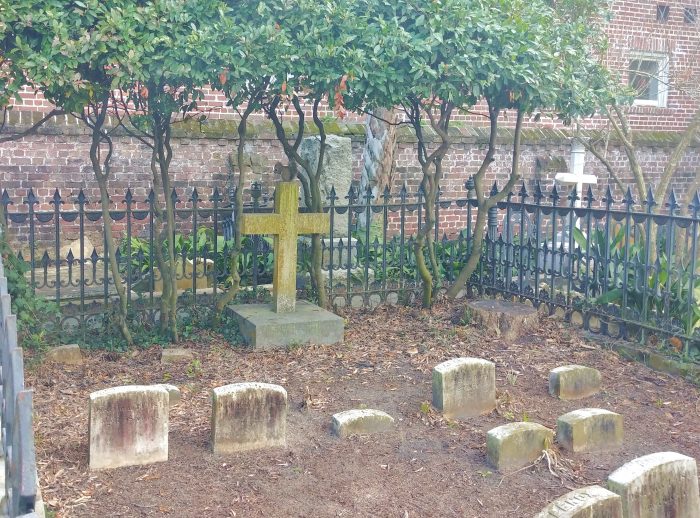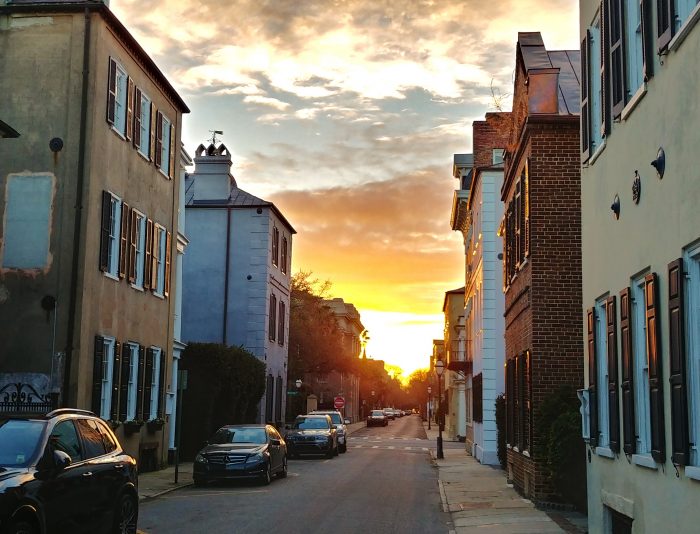This impressive house on Bull Street, built circa 1854, was home to Francis Warrington Dawson — who as a newspaper owner and editor helped form what is now the Post and Courier (the Pulitzer award winning Charleston daily). As an editor, one of the issues he championed was banning the practice of dueling. Ironically, as a result of an altercation over improper advances towards a governess in his household by a Bull Street neighbor, Dawson was shot and killed. Interestingly, despite some very odd behavior, his attacker and neighbor was acquitted. While celebrated by some, others must have thought that verdict to be bull.
An Iron Balcony
This beautiful house on Church Street boasts a wonderful cast iron balcony. While Charleston is better known for its wrought ironwork (where the iron is heated and then hand-shaped using a hammer — think Philip Simmons), there are some wonderful example of cast iron (where molten iron is poured into a mold) around town.
Castle Pinckney
When you are walking along the High Battery in this direction, if you look to your left you will see Shutes Folly — a little island in Charleston Harbor. The island is home to Castle Pinckney, a small fortification that was built in about 1810 by the US government. The castle sits on top of the remains of Fort Pinckney, which was built in the late 1700s and destroyed by a hurricane in 1804. Among its uses was as an artillery position and a POW camp during the Civil War, but it is believe a shot was never fired from it during its existence. Declared a National Monument in 1924, it ignominiously had that status revoked in 1951. After its ownership changed hands a number of times, it is currently owned by the Sons of Confederate Veterans — who bought it for the grand sum of $10.
Rainbow Row in the Morning
The early morning sun lighting up Rainbow Row on East Bay Street. This historic stretch of antebellum row houses is one of the most iconic and visited spots in Charleston.
We’re #1!
This beautiful view can be found in the Circular Church‘s graveyard. The graveyard is the oldest English burial ground still in existence in Charleston. The earliest grave, which is unmarked, dates back to 1685!
I Spy Fort Moultrie
General Moultrie is greeting the dawn at White Point Garden, as he looks across the harbor to the fort that bears his name on Sullivan’s Island.
The Bend
Church Street is one of the loveliest streets to walk down in Charleston. This part, where it becomes paved with bricks, is sometimes referred to as The Bend. Have you strolled along this beautiful stretch?
Tradd Street Driveway
This beautiful iron gate guards the entrance to what looks like a country lane, but it is actually the entrance to a driveway on Tradd Street in downtown Charleston.
Holy City Squirrel
This squirrel is having a snack in a very historic spot — the graveyard of St. Michael’s Church. Buried in the graveyard are many significant Charlestonians, including two signers of the United States Constitution — Charles Pinckney and John Rutledge.
Tradd Street Sunset
A beautiful Charleston evening sky, as seen along Tradd Street. Tradd, one of the few street that fully crosses the entire peninsula from west to east, provides a wonderful colonial-era frame for the setting sun’s activities.
- « Previous Page
- 1
- …
- 106
- 107
- 108
- 109
- 110
- …
- 188
- Next Page »
